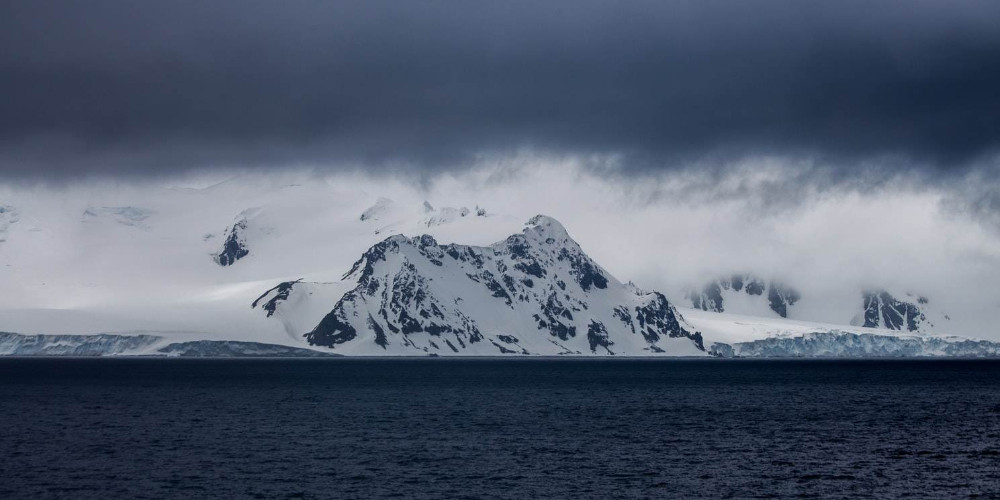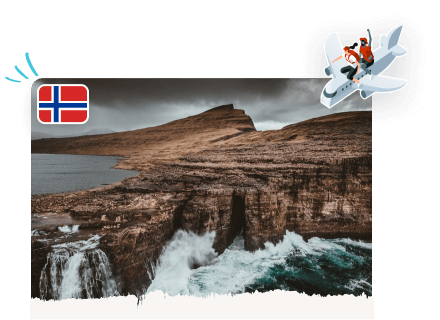
Have you ever think of what is the most remote island in the world? Or, what is the most beautiful remote island in the world? You may find several candidates as the most beautiful remote island in the world, but Bouvet Island is distinctive of them for its unique beauty. It has not happened by chance that it is famous for Bouvet Island mystery, and that is why many people want to visit Bouvet Island to see the Bouvet Island mystery. Where is Bouvet Island? If you have not heard of this island, you may be interested in where is Bouvet Island. The island is based in the South Atlantic Ocean, near Antarctica. If you look at the Bouvet Island map, you will see why it is the so-called most remote island in the world. There is a 1600 kilometers distance between the nearest land and the island. What is the Bouvet Island population? Due to its extreme location and climate, the Bouvet Island population is zero, which means it does not have permanent residents. Temporary residents are tourists and researchers who visit Bouvet Island for a short period. Who owns Bouvet Island? The island was discovered by a French explorer Charles Bouvet, but now the French are not the people who own Bouvet Island. In 1927, the island was spotted by a Norwegian expedition, and they claimed the island as a Norvegian land. Today, it is a natural reserve that belongs to the Norwegian Kingdom. What is the Bouvet Island flag? If you look at the Bouvet Island flag, you will see the Norwegian flag on the left-upper corner, and other parts are blue, which was decorated with the Bouvet Island map in white color. In this post, you will read about this most beautiful remote island in the world, and find answers to questions: where is Bouvet Island, who owns Bouvet Island, what is the most remote island in the world, how to visit Bouvet Island, what is the Bouvet Island population, what does the Bouvet Island flag look like, what to know from the Bouvet Island map, etc.
Exploration

Suppose you put a passing point on Bouvet Island and make a circle with a radius of 1600 km. In that case, you get an area the size of Europe that consists of only two things: The Norwegian Arctic Ocean island and 8 million square kilometers of sea. Jean Baptiste Bouvet de Lozier first observed the island on January 1, 1739. Since then, it was also seen by George Norris and his people in 1825. However the island's position was inaccurate, and both Cook, Ross, and Moore searched for Bouvet Island without success on their expeditions. It was as if sunk in the sea. That was the Bouvet Island mystery. In 1898, the German Valdivia expedition managed to find Bouvet Island and put the correct coordinates on it. In 1927, the Norwegian Norway expedition was the first to land on the island and annex it on Norway's behalf.
Bouvet Island suddenly gets bigger

On January 1, 1958, the American icebreaker Westwind discovered that Bouvet Island had suddenly become more extensive. Some online sources claim that the new area was formed due to a volcanic eruption, but down-to-earth Norwegian geologists have determined that the island's expansion was the result of a landslide. The site, which is 700 meters long, was named Nyroysa. After Nyroysa appeared, it has become much easier to go ashore on the island, something that both researchers, penguins, and seals have known to appreciate. In 1997, 422 ringed penguins, 4,700 gold-topped penguins, and 65,000 fur seals were registered in Nyroysa. All research cruises in recent years have been based on Nyroysa.
Italian polar "explorers"

In May 1959, Allan Crawford was asked if he knew of a ship sailing to Bouvet Island. The British-born Crawford was an expert on the South Atlantic and lived in South Africa. The boat was supposed to be used by the Italian polar explorer Silvio Zavatti. Crawford tried his best to find a suitable ship, but without success. In June 1960, Crawford received a strange letter from Zavatti in which he claimed that he had been on Bouvet Island already in March 1959, two months before Crawford was first contacted. Crawford was surprised. He did not know of any ship in South Africa that the Italians could have rented for this trip. Silvio Zavatti wrote a book about his alleged trip to Bouvet Island - a children's book entitled Viaggo All 'Isola Bouvet. There is only one picture in the book, and it shows some braces. The photo could, according to Crawford, have been photographed in any zoo. So the question is whether Zavatti's trip to Bouvet Island was just a bluff that was invented to secure support for his further polar research. Or maybe Crawford only had a distrust of Zavatti because he reached Bouvet Island before himself?
Shipwreck

South Africa had for several years wanted to establish a weather station on Bouvet Island but had not found a suitable location. After Nyroysa appeared, there were new opportunities that they decided to explore. The Royal Navy's icebreaker HMS Protector arrived on Bouvet Island on the first day of Easter 1964, and after three days, the wind had lied enough for them to send a helicopter onto the island. A group led by the Allan mentioned above Crawford was put ashore. There, to their great surprise, they find a 20-foot lifeboat in a lagoon. The lifeboat had no characteristics that showed where it came from. Some distance from the lifeboat, they also find a drum, afloat and a couple of oars. The boat was towed ashore by humans, but where did it come from, and where had the humans gone? There was no trace of mast or engine on the boat, so how could anyone have navigated these stormy waters with only oars to there, what is the most remote island in the world? Crawford and his team did a quick search but found no further clues.
Vela incident

On September 22, 1979, a Vela satellite recorded two powerful flashes between Bouvet Island and Marion Island. The US Vela satellites were intended to detect violations of the ban on nuclear test explosions. Such a double moment is characteristic of a nuclear blast. The Vela satellites had 41 times previously seen such double flashes.However in previous cases, nuclear powers such as China and France had admitted that they were behind it. Then traces of radioactivity were also found, but no one took responsibility for the incident on September 22. The United States made 25 surveillance flights but could not detect any radioactivity in the area. Maybe the flashes of light were due to a comet, asteroid, or a meteorite? Or maybe there was no blink at all, just an instrument fault in the old satellite? The incident provoked reactions in Washington, and President Carter's administration ordered investigations. Nuclear disarmament was an essential issue in the election campaign in which Carter tried to be re-elected. An expert panel led by Dr. Jack Ruina from MIT concluded that the flashes of light had many similarities to a nuclear test explosion, but several things were incorrect. They, therefore, concluded that there was probably no question of a nuclear test. However, the panel met with opposition from other experts who believed that the Carter-appointed panel's conclusion was politically motivated. Rumor has it that Israel had started nuclear tests, and some thought that the flashes came from a test made by Israel in cooperation with South Africa.
Disappeared weather station

In 1996, the Norwegian Polar Institute set up a field station in Nyroysa. The station was 36 square meters and was used by Norwegian researchers who, from time to time, visited the island to study fur seals and the penguin population. In connection with the field station, an automatic weather station was also installed, an essential measuring point for forecasting weather for the sea areas. However in 2007, the Norwegian Polar Institute announced that the field station was away from the satellite images. Once again, a mystery had occurred on Bouvet Island. This time the cause was that an earthquake had weakened the ropes and the field station's foundation. After that, extreme winter storms had probably blown the field station into the sea. Then in 2013, Norway will again occupy Bouvet Island. The Polar Institute has created a new field station to be set up in Nyroysa in December. They hope it contributes to new knowledge about the island. The field station has now been set up for testing in Tromso.
Popular in movies

Bouvet Island has inspired both artists and filmmakers. The movie Alien vs. Predator from 2004 discovers a satellite with strange heat rays from Bouvet Island. A team of engineers has been sent to the island to check what it may be. At an abandoned whaling station, they find a hole in the ground. Three hundred meters down the hole, they then find an old pyramid. Soon extraterrestrial beings appear, and the rest of the film is an insane battle between good beings and imperfect beings.


